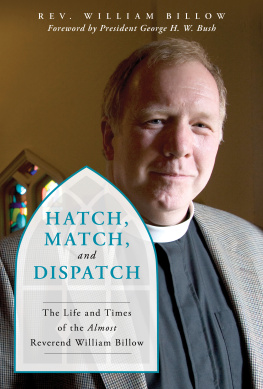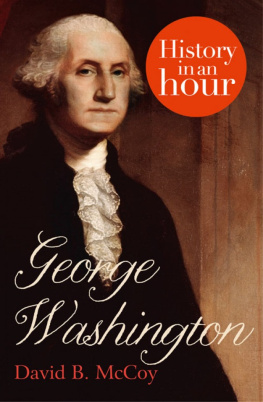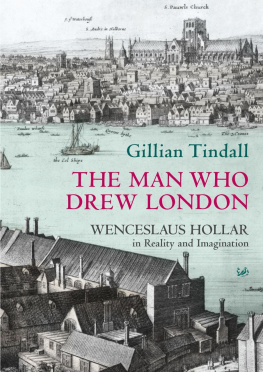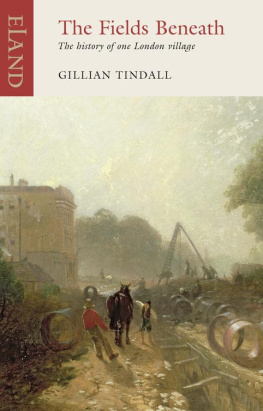CHAPTER I.
The Period Prior to the Adoption of the Site on the Potomac for the Permanent Seat of Government.
AS the beholder looks upon the Capital of the Nation today, with its wide, shaded streets, magnificent buildings, restful parks, costly monuments, and thousands of trees, it requires a vigorous play of the imagination to picture the swamps and forests which they have replaced and to realize that where is now the teeming population of a metropolitan city were once the tepees and campfires of the primitive Indian inhabitants.
Some of the ancient Indian village sites in the present District of Columbia named by archaeologists are: one at Little Falls on the west bank of the Anacostia; one between First and Second Streets, southeast; one on the crest of the hill on the Virginia side of the Potomac at Chain Bridge; another opposite the foot of Analostan Island on the Virginia side; another at the mouth of Four Mile Run; and yet another at the south end of Long Bridge; while the abundance of flint debris on hills bordering Rock Creek, show that vicinity to have been a popular Indian resort for making arrow-heads.
The site where our National Capital now spreads its streets and avenues was formerly the center of the one-time powerful Algonquins, the sub-tribe of this great family having their village here being the Powhatans. They were in possession when Captain John Smith explored the region and had been for hundreds of years previous to that time. All the tribes of the Algonquins met in council here and the place of these national meetings was on the delta between the Potomac and its Eastern Branch. The council-house stood at the foot of the very hill on which now stands the lofty American Capitol. The Indians also came here in great numbers during the fishing season and called the vicinity their "fishing ground."
The first white men to explore the Potomac, though they do not appear to have come as far up as the present site of Washington, were in all probability Spaniards.
The story of the first Spanish settlement as gathered from the Spanish records by Buckingham Smith is related by the Catholic historian Shea in a paper contributed by him to the New York Historical Society. The story as thus given is that a Spanish vessel came up the Potomac in the first half of the Sixteenth Century and carried away to Mexico the brother of the Chief of Axacan. Giving to the letter "x" its Spanish pronunciation approaching the German " ch, " the Spanish name Axacan becomes almost the exact equivalent of the English Occoquan. This Indian was baptized in the Christian Church and sent to Spain. In 1566 the Spanish Admiral Pedro Menendez sent a vessel with two Dominican fathers to set up a mission at Axacan but the party was frightened away. The enterprise was taken up four years later by a party of Jesuits under Father Segura. The latter expedition reached Axacan September 10, 1570, bringing with them the Indian who had been taken away by the Spaniards years before and who had been given the name Luis de Velasco, and who was relied upon to protect the party from the attacks of the Indians. Velasco 's wild nature reasserting itself, he deserted the missionaries and participated in their slaughter by the Indians. In the following spring a Spanish vessel arrived with supplies for the mission and carried the news of its fate back to Menendez who proceeded to Axacan and hung at the yard arm eight of those who had participated in the killing of the missionaries, though Velasco had escaped to the mountains. With Menendez the Spanish flag departed forever from the Potomac. The Spaniards named the Chesapeake the Bay of St. Mary and the Potomac the Espiritu Santo.
Parkman in his "Pioneers of New France" mentions letters from Menendez to Philip II of Spain reciting that in 1565 and for some years previous the French above the Gulf of St. Lawrence had received buffalo skins six thousand in two yean from the Indians who had brought them down the Potomac and up the coast in canoes. Mr. Hugh T. Taggart in a paper read before the Columbia Historical Society argues that the voyage from the Potomac to the St. Lawrence in heavy laden canoes was an impossibility and that the French must have done their trading with the Indians on the Potomac.
Captain John Smith, probably the first Englishman to explore the Potomac, as well as other rivers emptying into the Chesapeake Bay, said in his valuable and remarkable "General History of Virginia, New England and the Summer Isles:"
"The fourth river is called Patawomecke, 6 or 7 myles in breadth. It is navigable 140 myles, and fed as the rest, with many sweet rivers and springs, which fall from the bordering hils. These hils many of them are planted, and yield no lesse plentie and varietie of fruit, then the river exceedeth with abundance of fish. It is inhabited on both sides. First on the south side at the very entrance is Wighcocomoco and hath some 130 men, beyond them Sekacawone with 30. The Onawmanient with 100. And the Patawomekes more than 200. Here doth the river divide itself into 3 or 4 convenient branches. The greatest of the last is called Quiyouh, trending Northwest, but the river itselfe turneth Northeast, and is still a navigable streame. On the Westerne side of this branch is Tauxenent with 40 men. On the North of the river is Secowocomoco with 40. Somewhat further Potapaco with 20. In the East part is Pamacaeack with 60. After Moyowance with 100. And lastly, Nocotchtanke with 80. The river aboue this place maketh his passage downe a low pleasant valley overshadowed in many places with high rocky mountaines; from whence distill innumerable sweet and pleasant springs. "
Some historians deny that Captain Smith saw the present site of Washington and others assert that it is very uncertain, but whether he stood on the exact site of this city or not, it is reasonably certain that he came this far north on the Potomac. He tells of being entertained near the present site of Mt. Vernon, at Toags, which place appears on his map as Tauxenent on the Virginia side of the river; at Mayaones opposite, on the Maryland side; and at Nacotehtant or Nacotchtanke, which was situated within what is now the District of Columbia.
He went on up the river until his navigation was prohibited by immense rocks over which the water poured, so that it appears he went to or nearly to the falls.
William Stith, writing in 1746, tells of Captain Smith's voyage up the Potomac River, his encounters with tribes of Indians, the finding of the antimony mine, et cetera, and then says:
"Towards the Falls of Patowmack, they met several Parties of Indians in Canoes, loaded with the Flefh of Bears, Deer, and other wild Beafts."
This early navigator and explorer was one of the most striking and interesting characters of our Country's history, although he is accused of exaggeration and even of prevarication in recording his own deeds. One writer calls him "an egotist and a braggart, " but the same accuser says later: "If John Smith, in his many writings, sometimes boasted more than other men, he had also done more," and one to do was the sort of person needed then, as at all times. Smith was truly brave or he would not and could not have faced all the dangers to be met in exploring a country of savages, many of whom were unfriendly to the white people.








